#283 Salish seething
April 07th, 2018

Views of the Salish Sea: One Hundred and Fifty Years of Change around the Strait of Georgia
By Howard Macdonald Stewart
Madeira Park: Harbour Publishing, 2017
$39.95 / 9781550178036
Reviewed by Peter Grant
*
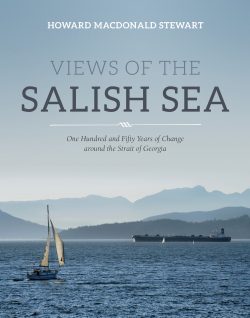 Howard Macdonald Stewart’s Views of the Salish Sea: One Hundred and Fifty Years of Change around the Strait of Georgia (Harbour) appeared on the B.C. Bestseller List for six weeks between October 2017 and January 2018. It was longlisted for the George Ryga Award for Social Awareness and is a finalist for the British Columbia Historical Federation’s Historical Writing Competition’s top prize, the Lieutenant Governor’s Medal for Historical Writing. Reviewer Peter Grant finds it consistently irksome and he “grieves for the trees” used in its production, literally weighing it against other books with similar subject matter: the body of water known consecutively as the Gulf of Georgia, Strait of Georgia and Salish Sea. Grant references the company that produced Stewart’s book five times and describes the author as a newcomer to history writing; so his is a decidedly unfriendly approach. We leave it to the discerning reader to determine the validity of the criticisms.– Ed.
Howard Macdonald Stewart’s Views of the Salish Sea: One Hundred and Fifty Years of Change around the Strait of Georgia (Harbour) appeared on the B.C. Bestseller List for six weeks between October 2017 and January 2018. It was longlisted for the George Ryga Award for Social Awareness and is a finalist for the British Columbia Historical Federation’s Historical Writing Competition’s top prize, the Lieutenant Governor’s Medal for Historical Writing. Reviewer Peter Grant finds it consistently irksome and he “grieves for the trees” used in its production, literally weighing it against other books with similar subject matter: the body of water known consecutively as the Gulf of Georgia, Strait of Georgia and Salish Sea. Grant references the company that produced Stewart’s book five times and describes the author as a newcomer to history writing; so his is a decidedly unfriendly approach. We leave it to the discerning reader to determine the validity of the criticisms.– Ed.
*
Views of the Salish Sea by Howard Macdonald Stewart is Harbour Publishing’s weighty follow-up to its even weightier 2014 The Sea Among Us: The Amazing Strait of Georgia, edited by Richard Beamish and Gordon McFarlane.
This latest contribution to the literature of our inland waterway weighs in at 1.2 kilograms (versus the 1.7 of The Sea Among Us). There’s a lot of prose here. Views of the Salish Sea takes an historical approach that complements the mostly scientific cast of the previous.
The “views” promised in Stewart’s title are not those of an album of pictures, although the book is well-illustrated. No, Views of the Salish Sea is a series of historical re-views, if you will, or surveys with a very broad brush of the Georgia Strait basin.
Also appearing in the title is the term Salish Sea. That makes it an important part of the book, or promises, at least, some development in the text: why the name might seem unfamiliar to a reader from away, that sort of thing … at least.
After the first sentence of the introduction, and the occasional reference to Georgia Strait as “the North Salish Sea” — a term the author may have invented and be the only user of — there’s no further discussion of Salish Sea, an omission I consider lethal in a book with this title.
In Beamish and McFarlane’s The Sea Among Us there’s an essay by Terry Glavin about the Salish people who disparaged the whole concept of a Salish Sea. It’s a name of recent coinage, applied by people of European heritage to First Nations people called “Salish” who don’t identify as such and who have been here for thousands of years without seeing the need to name the entire inland waterway — the argument con is quite rambly, isn’t it? Where’s the equal time for the pro side of the issue? Nowhere to be found in the Harbour suite.
The case for the Salish Sea ought to be in this book, for balance as well as Truth In Advertising. The author does not even accord the name the courtesy of acknowledging its provenance. Is the phrase really in the title only as bait? The times must indeed be desperate. Put that together with views that are not views, and I judge the title to be over the line: okay, borderline mendacious.
The term Salish Sea was coined by Western Washington University marine biologist Bert Webber in 1988 to bring attention to cross-boundary and cross-culture tidewater pollution, both the routine wastage from sewage, fish farm, industrial, urban and other sources and the potentially disastrous tanker spills.
Oh, we don’t have spills here because industry and government are here to protect our environment? Starting when? I well remember the Nestucca spill off Gray’s Harbor, Washington in 1988. An oil barge towline snapped; a chain of avoidable errors followed and for months West Coast Vancouver Island residents were cleaning up the mess. Absolutely no cross-border coordination of work; in fact, no effort to contain the spill.
Today, we remain almost as two solitudes, the British Columbia and Washington sides of the Salish Sea, metropolitan culture and First Nations at opposite poles of the cultural spectrum, while threats of pipelines and tankers and spills multiply exponentially.
To its credit, Views of the Salish Sea has a paragraph on the Kinder Morgan Trans Mountain pipeline expansion project, but it repeats the common error of quoting the proponent’s preposterous calculation that a major tanker spill would occur every 460 years on average, while fudging the opponents’ risk calculation merely as “far higher.”
By contrast, the City of Vancouver’s risk assessment, published in 2015 and readily available, pegged the likelihood of a major spill within the fifty-year life of the pipeline at up to two chances in three — more likely than not.
The worthy intention of Prof. Webber’s “Salish Sea” naming project is to bring science and technology to bear on the bi-national marine environment in the cause of better environmental protection. Part of the strategy is to bring the term into public discourse, raise public awareness of our shared heritage, and hopefully trigger positive change in their stewardship.
The Salish Sea idea caught on to the extent that by 2010 the legislatures of Canada, the United States, British Columbia, and Washington all adopted the name, although it nowhere supersedes the historical names of the major waterways, mainly Georgia Strait, Puget Sound, and the Strait of Juan de Fuca.
First Nations have, with all due to respect to Terry Glavin, embraced Salish Sea, beginning with a 1992 inter-nation declaration and culminating in February 2010 with the endorsement of the name by the Gathering of Coast Salish First peoples in Victoria. And the name has certainly caught on in the public imagination. There are Salish Sea societies and festivals and a Salish Sea aquarium in Sidney.
The literature of the Salish Sea has, however, lagged. There have been, to my count, four books and a series of walking guides. The endlessly interesting Islands in the Salish Sea: A Community Atlas (Touchwood Editions, 2005), edited by Sheila Harrington and Judi Stevenson, anatomized energy use, waste production, and other key metrics of the different populations living on the Strait of Georgia.
A more recent American coffee-table book, The Salish Sea: Jewel of the Pacific Northwest (Seattle: Sasquatch Books, 2015), by Audrey DeLella Benedict and Joseph Gaydos, takes an inventory of natural and biological resources on both sides of the border (mainly the southern portion). Plus Harbour’s two books.
So here we have from Harbour in 2017 a book that appears to meet a crying need by reviewing the history and state of the Salish Sea (or at least one arm, the exclusively Canadian part of it) for popular consumption. Surely Views of the Salish Sea can help the cause of raising public awareness?
This may well be the first book to review the human history of the Georgia Strait basin from the unusual perspective that makes the body of water and its foreshore the ubiquitous reference point. This focus requires the word “strait” to be in almost every paragraph. There already exists, of course, a formidable regional body of literature and historical scholarship about the places, people, and times treated in the book.
Does this work add anything to the record? Build on it, hopefully? Or at least present the key matters clearly so as to assist the reader to understand the nature and peculiarities of the region?
It should be said that the author is a newcomer to history writing, coming from a career as an international development consultant (of unspecified nature) who returned to academia to get a Ph.D. in historical geography and environmental history. His dissertation became this book. The thesis is available on the internet, so may be compared with the book in the search for perspective.
A structure is hinted at in the Preface — “This book presents five distinct, interwoven historical geographies of the Strait” — and again in the introductory chapter, where there’s an all-too-brief reference to “five interwoven histories of the Strait.” (I was unable to depict to myself either “interwoven” structure.) In the absence of a summary outline, I take the statements to refer to the five historical themes about Georgia Strait I discovered through much flipping back and forth between the table of contents and the chapters as: 1. Colonial settlement; 2. First Nations dispossession; 3. Resource extraction on land and from the sea; 4. Pollution; and 5. Recreation. (There are actually six re-views, because resource extraction gets two chapters.)
The five themes were, it should be noted, specified in the author’s Ph.D. thesis, which bore another puzzling title: “Five Easy Pieces.” Also missing in the introductory material, but needed to provide identity and context, is a historical overview of the evolving political economy of the region.
What is there, in the Introduction, “A Short Modern History of the Strait,” raises issues of fact at every turn. “The Hudson’s Bay Company built forts at Victoria and Nanaimo, and on the Fraser River” — yes, but not in that order, and only a bastion at Colviletown, as Nanaimo was then known. “These would have been exciting and lucrative places for Indigenous people to visit.” Now I was always told “shoulds and woulds don’t count,” and that’s especially true in history-writing, unless one is constructing a counter-factual interpretation. The use of the Type Three Conditional “would have been” signals to me a paucity of factual material.
There’s also a problem with chronology. The Nanaimo bastion was constructed in 1853. The narrative then backtracks to 1849, when “the British established a Crown colony on Vancouver Island.” Uh-oh! Facts. Vancouver Island became a proprietary colony of the Hudson’s Bay Company, with a governor appointed by the Crown. The Crown took over the colony in 1859. The mainland colony of British Columbia was a Crown colony. Vancouver Island was not.
The establishment of the mainland colony of British Columbia (1858) and the merger of the colonies (1866) are discussed in a fragmentary way. Victoria, by the way, was made the capital of the combined colony of British Columbia in 1868, not 1866. It’s another good story that is not told here.
There’s little about how the region developed under these régimes, and nothing about the system of government that became entrenched when British Columbia bought into the British North America Act in 1871: the two-tiered parliamentary government with its extraordinarily powerful executive branch that, after all, operates the systems — whether environmental controls, zoning or logging quotas, or fish farm permits, all discussed here — that the ruling élites contrive and that we live with. Wouldn’t that be relevant to the book’s later consideration of the issues facing Georgia Strait? It seems to be assumed that we just know all that background with its troublesome facts.
Each of six thematic chapters applies a grid of four periods to the timeframe 1849 to 1980s. The periods are the same in every chapter, while each chapter has topics germane to the subject. In most chapters, the topics are demarked with subheadings — but not, curiously, in the chapter on Settlement, where it could really use them, as the text progresses from topic to topic in complicated transitions that blur, often because they harness materials that are obviously unlike. (The thinking seems to be, “Now, because it is part of the theme, we will cover Maritime Hazards.”)
The chapter on First Nations Dispossession has subheads, but they are more allusive than denotative. Consider the subhead “Land Hunger” (p. 76). A phrase much used in this book, it’s not one that denotes anything I know of. Metaphorically, it suggests the ambitions of settlers and their dealings with the Crown or other landowners. Whereas, it turns out, the section is actually about land sales and the taxation régimes of the colonial administration as they impinged on First Nations. Isn’t that rather a different matter?
In my playbook, the colonial authorities were not the ones motivated by land hunger. They served the cause of Empire and wanted the colonies to benefit from land sales; they and their masters wanted to establish a land-based élite. The subhead is misleading. The topical approach dictates a highly repetitive format that privileges concept over fact. Views of the Salish Sea is way long on generalities and way short on the historian’s tried-and-true M.O. of creating theme-driven narratives with ample evidence in support of the historical record.
I always thought that evidence was of equal importance to narrative and related as a house’s foundations are to its frame. In Views of the Salish Sea I note an avalanche of generalization that has the ring more of truism than truth:
Both as a practical highway and a dangerous barrier, the Strait was a pervasive presence in settlers’ lives. While sailing ships and steamers carried the heavy loads, some settlers bought dugout canoes and some added outriggers to make them more stable.
The generalities are interrupted with an anecdote gleaned from the newspaper about a settler who hired a First Nations paddler to convey him and his bride home. Here we are in the realm of illustration — edifying, perhaps, but far from the historian’s methodical work of interweaving a narrative and its evidence.
The “interweavings” in Views of the Salish Sea are a grid that imprisons every interest in the subject. On occasions where the narrative escapes the leaden abstractions of generality and threatens to tell a real story, it takes to zipping happily back and forth in time and space. There’s a tonne of schoolmasterly “splainin” and talking down that is a frightful chore to wade through.
Why the narratives stop in the 1980s, more than a decade shy of the 150 years promised in the title, is a puzzle. The beginning date, 1849, marks the start of the colonial project in what became British Columbia. But why stop thirteen or fourteen years short of the promised goal line, and thirty-plus years short of the present? Why not carry through? It is asserted that the “rapid rise of neoliberalism” in the 1980s “marked a convenient boundary” for this work. This had something to do with a switch from government regulation of industry to self-regulation.
Also, when you get to recent times, it is stated, there’s not so much stuff in the archives. And that somehow settles it: end of story. I have found, on the contrary, a wealth of accessible recent material in government, industry, media, and other archives, both digital and brick-and-mortar, for those with the patience of a collector.
What the book’s timeframe may be excluding by marking out the rise of the neo-liberals — about twenty years off, in my view — is the fragmentation and often disappearance of “privatized” information, which does indeed pose huge obstacles to research. Not to mention the lies and secrecy that have become hallmarks of governments everywhere, and not just the radically conservative.
Views of the Salish Sea does provide a brief wrap-up chapter – twenty pages, less than seven percent of the book — that reviews the key issues facing the region and the several million residents in its catchment.
If this book doesn’t work as a straightforward chronicle, does it work as a reference? Can it be consulted about this or that historical matter? It does have an index. How about as a sort of miscellany, studded with little nuggets of interest to provide a bit of entertainment or, dare we hope, edification? My reading yielded few nuggets.
Incidentally, it’s a crying shame that Harbour, having scored a slam-dunk with The Sea Around Us, can’t sell that book. I see copies of that $40 book on sale for less than $4 on the internet. I say grab it! Its three chapters on the human history of the Georgia Strait basin are coherent and engaging, and the science is exemplary.
As to the present volume, I grieve for the trees.
*
 Peter Grant (right) is the author of seven books about Vancouver Island (Victoria: A History in Photographs; Wish You Were Here; Life on Vancouver Island in Historical Postcards; Vancouver Island Book of Everything; Vancouver Island Imagine, with Boomer Jerritt) and is the proprietor of the Oak Bay Chronicles weblog (oakbaychronicles.ca). He lives in Victoria. Author photo by Godfrey Stephens.
Peter Grant (right) is the author of seven books about Vancouver Island (Victoria: A History in Photographs; Wish You Were Here; Life on Vancouver Island in Historical Postcards; Vancouver Island Book of Everything; Vancouver Island Imagine, with Boomer Jerritt) and is the proprietor of the Oak Bay Chronicles weblog (oakbaychronicles.ca). He lives in Victoria. Author photo by Godfrey Stephens.
*
The Ormsby Review. More Books. More Reviews. More Often.
Reviews Editor: Richard Mackie
Reviews Publisher: Alan Twigg
The Ormsby Review is a journal service for serious coverage of B.C. books and authors, hosted by Simon Fraser University. The Advisory Board consists of Jean Barman, Robin Fisher, Cole Harris, Wade Davis, Hugh Johnston, Patricia Roy, David Stouck, and Graeme Wynn. Scholarly Patron: SFU Graduate Liberal Studies. Honorary Patron: Yosef Wosk.
“Only connect.” – E.M. Forster




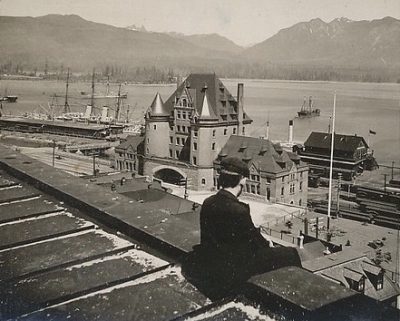
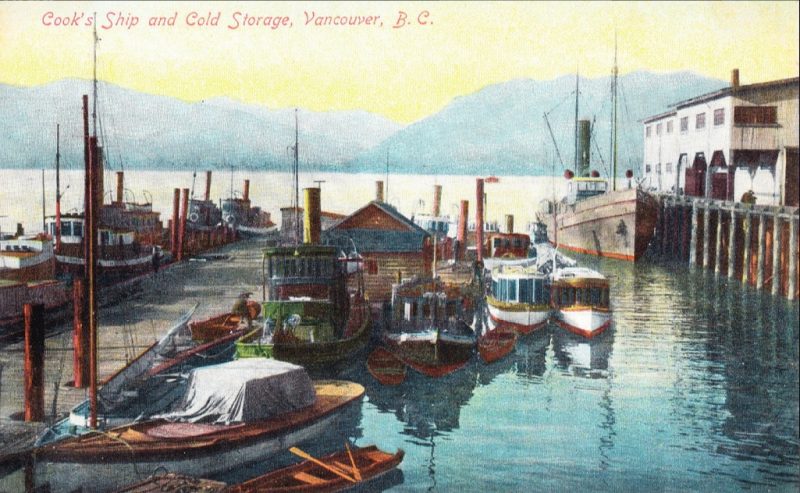

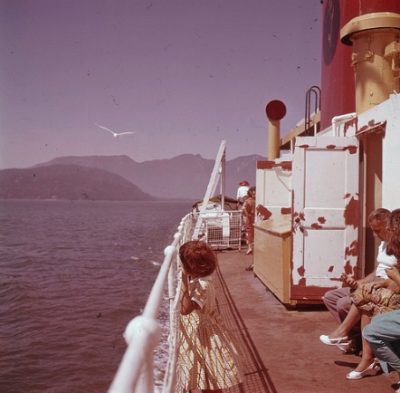
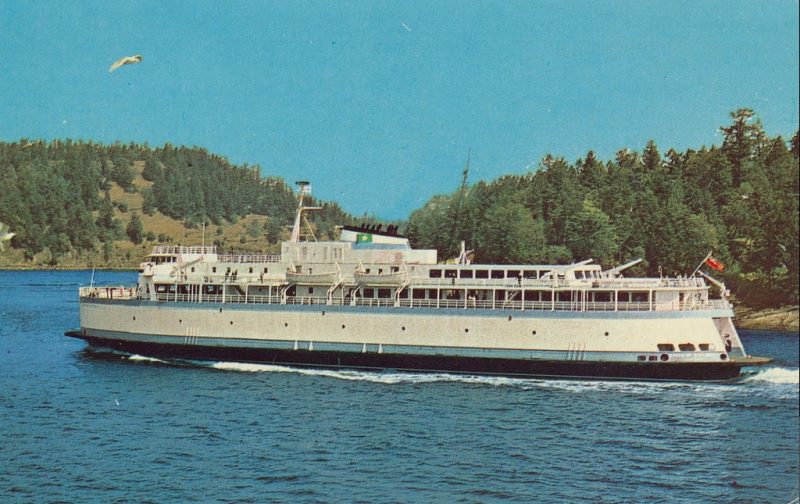

Leave a Reply